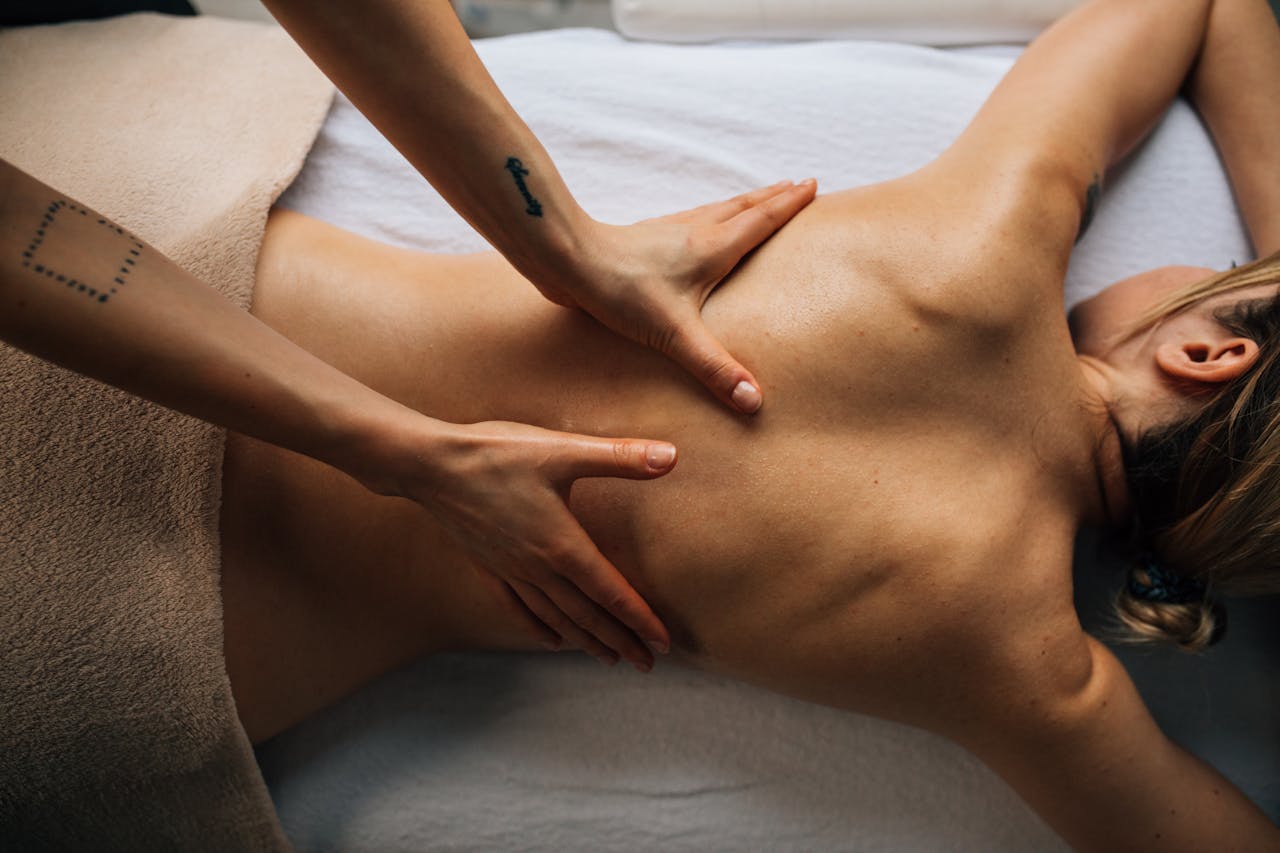Curious about a holistic approach to long-lasting pain relief? Structural Integration might just be the answer you’ve been seeking. This deep-tissue bodywork method aims to address not just symptoms but the root causes of discomfort, potentially providing enduring relief. By targeting fascia and improving alignment, Structural Integration seeks to enhance overall well-being and alleviate chronic pain. If you’re tired of temporary fixes and seeking a more sustainable solution, delving into the world of Structural Integration could be a game-changer for your health journey.
What Is Structural Integration?
Origins And Principles
Structural Integration Structural Integration was developed by Dr. Ida Rolf in the 20th century. It focuses on manipulating the body’s connective tissues to improve posture and overall well-being. The process involves deep tissue manipulation to release tension and realign the body.
Typical Session Process
During a Structural Integration session, the practitioner will assess your posture and movement patterns. They will then use hands-on techniques to manipulate the fascia, aiming to improve alignment and mobility. Each session typically lasts around 60-90 minutes.
Restoring Structural Balance
Structural Integration aims to address imbalances in the body caused by poor posture, injuries, or repetitive movements. By working on the fascia, it seeks to restore proper alignment and function to muscles and joints. The goal is to create more efficient movement patterns that reduce strain on the body over time.
Structural Integration vs Massage
Techniques
Structural Integration and massage may seem similar, but they differ significantly in their techniques. While massage primarily focuses on manipulating muscles to relieve tension and promote relaxation, Structural Integration delves deeper into the body’s structural alignment.
Approach
In Structural Integration, practitioners work on the body’s myofascial system, which includes muscles and fascia. This approach aims to reorganize the connective tissues to improve posture and overall alignment. On the other hand, massages typically target specific muscle groups to release tension.
Effects On Chronic Pain Relief
When it comes to long-term pain relief, Structural Integration tends to offer more lasting benefits compared to traditional massage therapy. The structural changes brought about by Structural Integration sessions can lead to improved alignment and reduced strain on the body over time.
Comparison Of Long-Term Effects
- Structural Integration: Provides lasting relief by addressing underlying structural issues that contribute to chronic pain.
- Massage: Offers temporary relief by focusing on muscle manipulation without necessarily addressing structural imbalances.
Key Benefits Of Structural Integration
Improved Posture
Structural Integration enhances posture by aligning the body’s structure, reducing strain on muscles and joints. This leads to better balance and overall body alignment.
Structural Integration sessions focus on manipulating the body’s connective tissues to bring them into proper alignment. By releasing tension in these tissues, individuals experience improved posture over time.
Reduced Pain
One of the significant benefits of Structural Integration is pain reduction, particularly in chronic pain conditions like back pain or neck stiffness. Through targeted manipulation, Structural Integration can alleviate discomfort and improve mobility.
Structural Integration targets specific areas of tension in the body, helping to release knots and tightness that contribute to pain. This targeted approach can provide long-term relief from persistent aches and pains.
Release Of Muscle Memory And Emotions
Structural Integration not only works on physical aspects but also addresses emotional well-being by releasing stored emotions within muscles. This process helps individuals let go of past traumas and negative experiences.
By targeting muscle memory, Structural Integration can help individuals release emotional baggage stored in their bodies. This holistic approach aids in both physical and emotional healing.
Holistic Approach To Well-Being
Unlike traditional massage therapy, Structural Integration takes a holistic approach by considering how physical imbalances affect emotional well-being. This comprehensive view helps individuals achieve overall health and wellness.
Structural Integration practitioners focus on creating balance within the body’s structure, which in turn impacts emotional states. By addressing both physical and emotional aspects simultaneously, Structural Integration offers a more comprehensive approach to well-being.
Structural Integration For Chronic Pain
Effectiveness In Managing Chronic Pain
Structural Integration has shown promising results in managing chronic pain by addressing the body’s structural alignment. This holistic approach aims to relieve tension and discomfort by manipulating the fascia, the connective tissue surrounding muscles and organs.
Chronic pain conditions such as fibromyalgia and lower back pain have been reported to improve after undergoing a series of Structural Integration sessions. Clients often experience reduced pain levels and increased mobility, enhancing their overall quality of life.
Alleviating Stiffness And Compression
Through targeted manipulation of the fascia, Structural Integration can effectively alleviate stiffness and compression in specific areas of the body. By releasing adhesions and realigning the body’s structure, this technique promotes better posture and movement patterns.
Clients suffering from conditions like tension headaches or shoulder impingement may benefit from Structural Integration’s ability to release tight areas and restore balance within the musculoskeletal system. The gradual changes brought about by Structural Integration sessions can lead to long-term relief from chronic pain symptoms.
Importance Of Choosing A Certified Practitioner
Selecting a certified Structural Integration practitioner is crucial for ensuring safe and effective chronic pain relief. Certified Rolfer practitioners undergo extensive training to understand the intricacies of the human body’s biomechanics and structural integration.
Cost And Insurance
Costs
Structural Integration sessions typically cost between $125 to $200 per session, with the initial session often being more expensive due to the comprehensive assessment involved. The number of sessions needed varies depending on the individual’s condition, but a full series of Structural Integration sessions can range from $1,000 to $2,000. Some practitioners offer package deals or discounts for booking multiple sessions upfront.
Insurance Coverage
Insurance coverage for Structural Integration can be limited, as it is considered an alternative or complementary therapy by many insurance providers. However, some insurance plans may cover Structural Integration if it is recommended by a healthcare provider for specific conditions such as chronic pain or injury rehabilitation. It is advisable to check with your insurance provider beforehand to understand what costs might be covered.
Alternative Payment Methods
For those without insurance coverage or looking for alternative payment methods, there are options available to make Structural Integration more affordable. Some practitioners offer sliding scale fees based on income, making it more accessible to a wider range of individuals. flexible spending accounts (FSAs) or health savings accounts (HSAs) may cover Structural Integration expenses if prescribed by a healthcare provider as part of a treatment plan.
DIY Structural Integration Possibilities
Benefits Of DIY Structural Integration
DIY Structural Integration, also known as self-myofascial release, offers individuals a cost–effective way to manage minor pain and discomfort. By applying pressure to specific points on the body using tools like foam rollers or massage balls, muscle tension can be reduced.
Safe Self-Structural Integration Techniques
Engaging in DIY Structural Integration can help improve flexibility, reduce muscle soreness, and enhance overall well-being. Start by targeting areas of tightness or discomfort with gentle pressure and gradually increase intensity. Incorporating self-Structural Integration into your routine can promote self–care and relaxation.
Risks Of DIY Structural Integration
While DIY Structural Integration can provide temporary relief, there are risks involved when not performed correctly. Without proper training or guidance from a certified Rolfer, individuals may inadvertently exacerbate existing issues or cause new injuries. It’s crucial to avoid excessive pressure and consult with a professional before attempting advanced techniques.
Latest Structural Integration Updates
Structural Integration continues to evolve, with cutting–edge techniques enhancing its effectiveness in addressing chronic pain and improving overall well-being. Practitioners are incorporating innovative approaches to tailor sessions for individual needs.
Recent studies have shown promising results regarding the long-term benefits of Structural Integration in pain management. Research indicates that regular Structural Integration sessions can lead to sustained pain relief and improved posture over time.
For enthusiasts seeking self-care options, there is a rise in online tutorials and educational materials offering guidance on basic Structural Integration techniques. These resources empower individuals to explore the benefits of Structural Integration at their convenience.
Reviewing Structural Integration’s Effectiveness
Long-Term Benefits
Structural Integration has shown promising results in providing long–term pain relief for individuals suffering from chronic issues. The structural integration techniques used in Structural Integration sessions aim to improve posture, alignment, and overall body function. Over time, this can lead to reduced pain levels and increased mobility.
Key Takeaways
- Improved Posture: Through targeted manipulation of connective tissues, Structural Integration helps correct imbalances in the body, leading to better posture and reduced strain on muscles.
- Enhanced Body Awareness: Clients often report increased awareness of their body movements and habits after undergoing Structural Integration sessions, which can contribute to long-term pain management.
- Holistic Approach: Structural Integration focuses on treating the body as a whole system rather than isolated symptoms, addressing underlying causes of pain for lasting relief.
Complementary Approach
Considering the holistic nature of Structural Integration, it can be a valuable complementary approach to traditional pain management methods. While it may not replace medical interventions entirely, incorporating Structural Integration into a comprehensive treatment plan can offer additional benefits. By addressing structural imbalances and promoting better movement patterns, Structural Integration can support the body’s natural healing processes.
Incorporating Structural Integration into your wellness routine alongside other modalities like physical therapy or chiropractic care can provide a more well-rounded approach to managing chronic pain. Many individuals find that combining different therapies tailored to their specific needs yields the best results in long-term pain relief.
Personalized Care
One of the strengths of Structural Integration is its focus on individualized treatment plans. Each session is tailored to address the unique needs and goals of the client, ensuring that the work done during Structural Integration sessions is targeted and effective. This personalized approach enhances the potential for sustained improvements in pain management over time.
- Tailored Sessions: Rolfers adapt their techniques based on feedback from clients, making adjustments to optimize outcomes for each individual.
- Progress Tracking: Clients often experience gradual changes in their bodies as they progress through a series of Structural Integration sessions, providing tangible evidence of improvement.
- Educational Component: Rolfers may offer guidance on self-care practices and exercises to support ongoing pain management outside of sessions.
Conclusion
In considering Structural Integration for long-term pain relief, you’ve delved into its benefits, effectiveness for chronic pain, and cost implications. Structural Integration offers a promising alternative to traditional massage therapy, potentially providing sustainable relief from persistent discomfort. As you explore the DIY possibilities and the latest updates in the field, remember that Structural Integration’s effectiveness lies in its holistic approach to addressing bodily imbalances and enhancing overall well-being.
Take the next step in your journey towards understanding Structural Integration’s effects by consulting with a certified practitioner. Experience firsthand how this specialized form of bodywork can alleviate your pain and improve your quality of life. Embrace the opportunity to prioritize your health and explore the potential benefits that Structural Integration may offer you.
Alleviate Chronic Pain With Structural Integration: Discover MedicinEvolution’s Innovative Approach For Long-Term Relief!
Are you or someone you care about battling chronic pain? MedicinEvolution is pioneering the use of Structural Integration for profound structural integration and pain management, providing a novel path to enduring relief and improved physical alignment. By harnessing the transformative power of Structural Integration, MedicinEvolution targets the deep-seated causes of chronic pain, initiating a holistic recovery process. Experience the freedom from ongoing discomforts such as jaw pain, difficulty in chewing, and uneven facial muscle tension—MedicinEvolution customizes its Structural Integration techniques to meet your specific needs, guiding you toward significant pain reduction and enhanced functionality. Their tailored Structural Integration sessions help you overcome the limitations imposed by chronic pain, unlocking your body’s full potential for movement and comfort.
If chronic pain has been limiting your mobility, or affecting your daily life, or if you’re seeking a sustainable approach to manage your symptoms, MedicinEvolution’s cutting-edge strategy that combines Structural Integration with specialized pain management techniques is your solution. Don’t allow chronic pain to set the limits of your physical health—act now and schedule your consultation with MedicinEvolution today! Begin your journey to recovery with their Structural Integration-focused treatments and progress towards a life of harmony, free from pain, and with a body that functions smoothly and comfortably. Witness the incredible transformation as your body escapes the grip of chronic pain!





